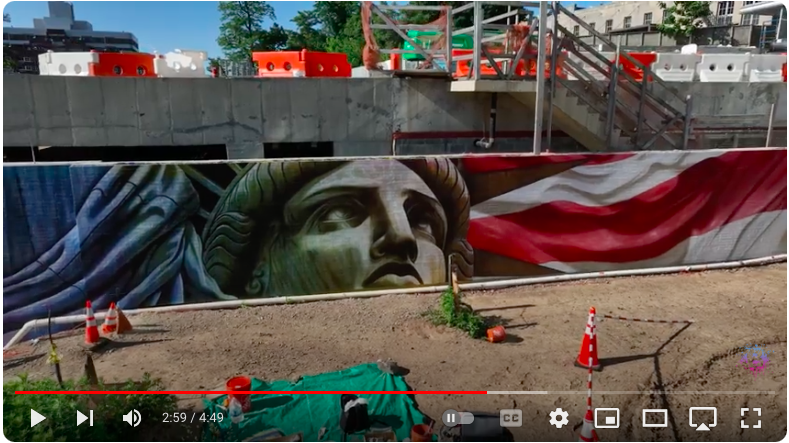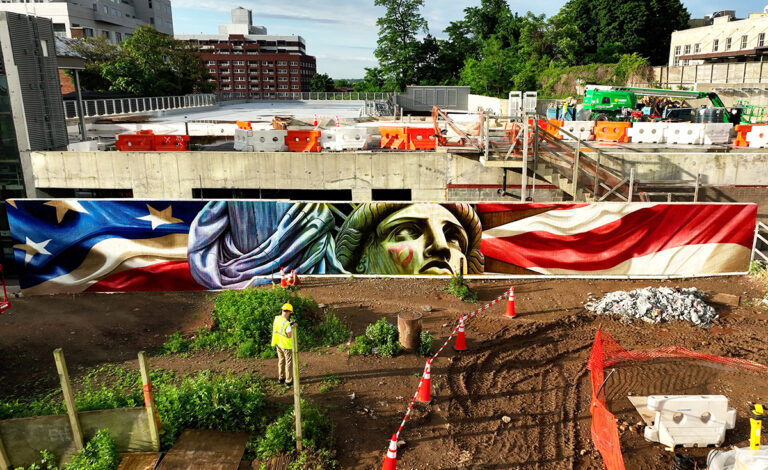Rafael Blanco, a native of Alicante, Spain, began his artistic journey as a classical studio painter, training for over 15 years. However, his artistic trajectory took a significant turn in 2014 during a 24-hour mural marathon in Reno, Nevada. This event marked Blanco’s transition from studio painting to the dynamic world of public art. Since then, Blanco has skillfully integrated his classical techniques with the vibrant nuances of street art, creating large-scale, site-specific painting interventions that captivate and inspire.

Blanco’s journey into public art is a testament to the power of adaptability and exploration. His classical training provided a solid foundation, but it was his willingness to embrace new forms of expression that allowed him to evolve as an artist. Public art, with its accessibility and ability to engage a wide audience, became Blanco’s new canvas. His murals are not just paintings; they are powerful statements that transform public spaces and provoke thought and dialogue.
Blanco’s work can be seen across the United States, from California to Maryland and from Texas to Illinois. Each mural is unique, tailored to its specific location, and imbued with a message that resonates with the community. Blanco’s ability to combine technical precision with creative freedom results in artworks that are both aesthetically pleasing and deeply meaningful.
One of Blanco’s works is “Lady Liberty,” a reimagined version of the Statue of Liberty located at the edge of Staten Island. Commissioned by the Staten Island Economic Development Corporation, this mural is a vibrant and patriotic depiction that aims to beautify and improve a commonly overlooked borough of New York City. Measuring 11 feet by 88 feet, “Lady Liberty” stands as a beacon of sustainability and diversity. The statue, adorned with a heart and leaves on her face, symbolizes a commitment to environmental consciousness, while the colorful, drip-textured finish celebrates the diversity that defines New York City.
Blanco’s murals are more than just visual spectacles; they are catalysts for change. Through his art, Blanco advocates for the potential of public art to transform communities and inspire social change. His work often addresses themes of sustainability, diversity, and social justice, encouraging viewers to reflect on these important issues. By bringing art into public spaces, Blanco democratizes the artistic experience, making it accessible to all and fostering a sense of shared identity and community pride.
In addition to his painting, Blanco extends his advocacy for public art through public speaking. He has delivered talks, including a TEDx presentation titled “Ditching the Studio,” where he shares his journey and the transformative power of public art. Through these engagements, Blanco inspires others to see the world as a canvas and to recognize the potential of art to create positive change.
Blanco’s dedication to public art is evident in the numerous mural and street art festivals he has participated in. Each festival is an opportunity for Blanco to connect with other artists, learn from different styles and techniques, and contribute to a collective artistic movement. These experiences enrich his own practice and allow him to continually evolve as an artist.
Despite his success, Blanco remains grounded and committed to his mission. He understands that public art is not just about personal expression but about creating works that resonate with the community and address its needs and aspirations. His murals are collaborations with the spaces they inhabit and the people who interact with them, resulting in artworks that are truly integrated into the fabric of the community.
In conclusion, Rafael Blanco’s transition from classical studio painting to public art represents a bold and inspiring journey. His ability to blend technical skill with creative freedom has resulted in impactful murals that transform public spaces and engage communities. Through his art and advocacy, Blanco demonstrates the incredible potential of public art to inspire change and foster a sense of community. His work, characterized by its vibrancy and meaningful messages, continues to captivate and inspire audiences across the United States.

